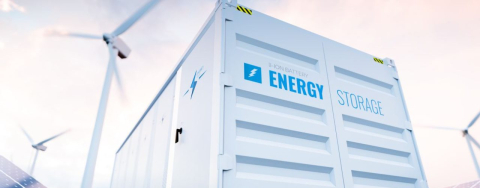mFRR (manual Frequency Restoration Reserve) is one of the Ancillary services used in the electricity industry, the purpose of which is to restore frequency balance in the transmission system.
Main features of mFRR
The reserve is activated at the request of the transmission system operator (in Poland it is PSE - Polskie Sieci Elektroenergetyczne). The activation process requires human intervention (manual command from the operator), as opposed to automatic reserves such as aFRR (automatic Frequency Restoration Reserve). The mFRR reserve should be activated within a specified time from the command, usually within 15-30 minutes.
- The main purpose of mFRR is to restore the balance between electricity demand and supply after disruptions (e.g. a sudden drop in production or an increase in energy consumption). It helps to restore the system frequency to its nominal value (usually 50 Hz).
- mFRR is activated manually by the transmission system operator (in Germany, this is the Federal Network Agency). The response time is usually between 15 and 30 minutes.
- Support for other reserves
- mFRR is used when automatic reserves (e.g. aFRR) are not sufficient to restore the balance in the system.
- Increasing the reliability of energy supply
- It helps to prevent blackouts and grid failures, supporting the stability and continuity of energy supply.
- mFRR allows for effective management of energy balancing in changing operating conditions of the power system, which is particularly important in the context of the growing share of renewable energy sources.
Who can be an mFRR provider?
Various entities can be mFRR (manual Frequency Restoration Reserve) providers if they meet specific technical and operational requirements set by the transmission system operator, including:
- Conventional power plants - are able to quickly increase or decrease energy production at the operator's request.
- Renewable energy sources (RES) - in some cases, wind or solar farms can provide mFRR if they are equipped with appropriate energy storage or production control systems.
- Cogeneration units - installations that produce electricity and heat simultaneously can be mFRR suppliers as long as they have the ability to quickly regulate energy production.
- Energy storage - is an ideal mFRR provider due to its fast response time.
- Energy resource aggregators - can combine distributed generation or consumption units and offer them as a single balanced service to the operator.
- Industrial companies - can participate in the mFRR market by reducing their energy consumption at the operator's request.
Use in balancing
mFRR is activated when the automatic reserves are not able to restore the balance on their own. It is one of the key reserves used by transmission system operators to ensure the reliability of electricity supply and the stability of the power system.
Difference between aFRR, FCR and mFRR
- FCR (Frequency Containment Reserve) - works in real time (milliseconds-seconds) and is designed to stop the frequency from dropping or rising in the event of a disturbance.
- aFRR - automatic reserve that restores balance after a few seconds and works for several minutes.
- mFRR - manual reserve activated by the operator in case of major or prolonged disruptions that require additional support.

